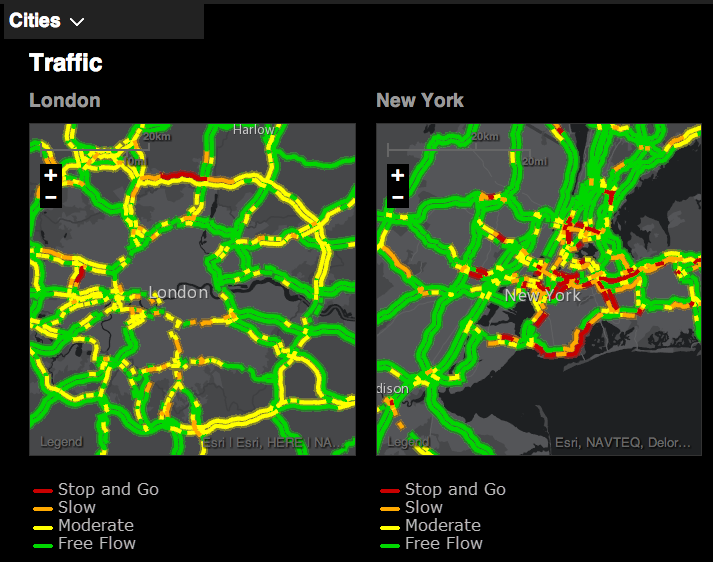

Urban Observatory: Traffic in London versus New York (Screenshot)
Innovative Tools and Resources for Global Mapping
Nearly 15,000 people from a wide range of professions and industries are attending an annual global mapping conference in San Diego, California. But only a few dozen journalists are there, despite the numerous ideas, methodologies, data, and potential sources that are available. Known as the ESRI International User Conference, it provides many of the presentations online. One of the new international projects is the Urban Observatory that allows a user to compare and map data in cities around the world.
ESRI was formed as a land-use company in 1969 and expanded into an international company that works closely with governments and business and their data. For journalists, the software has been sometimes difficult to learn and use and has been expensive. But over the years the software has become easier to handle and ESRI now offers key components and data for free to nonprofits and for the media.
ESRI also is working on a free service called storymaps that uses data, maps, and timelines to tell stories in more informative ways. A National Geographic cartographer and designer demonstrated Geostories during the conference’s small media track. GeoStories is an approach that mixes photographs, audio, and video into the maps.
The ESRI effort is causing journalists who use Google and Tableau to take another look at the company and its software, especially investigative journalists who are dealing with global issues.








